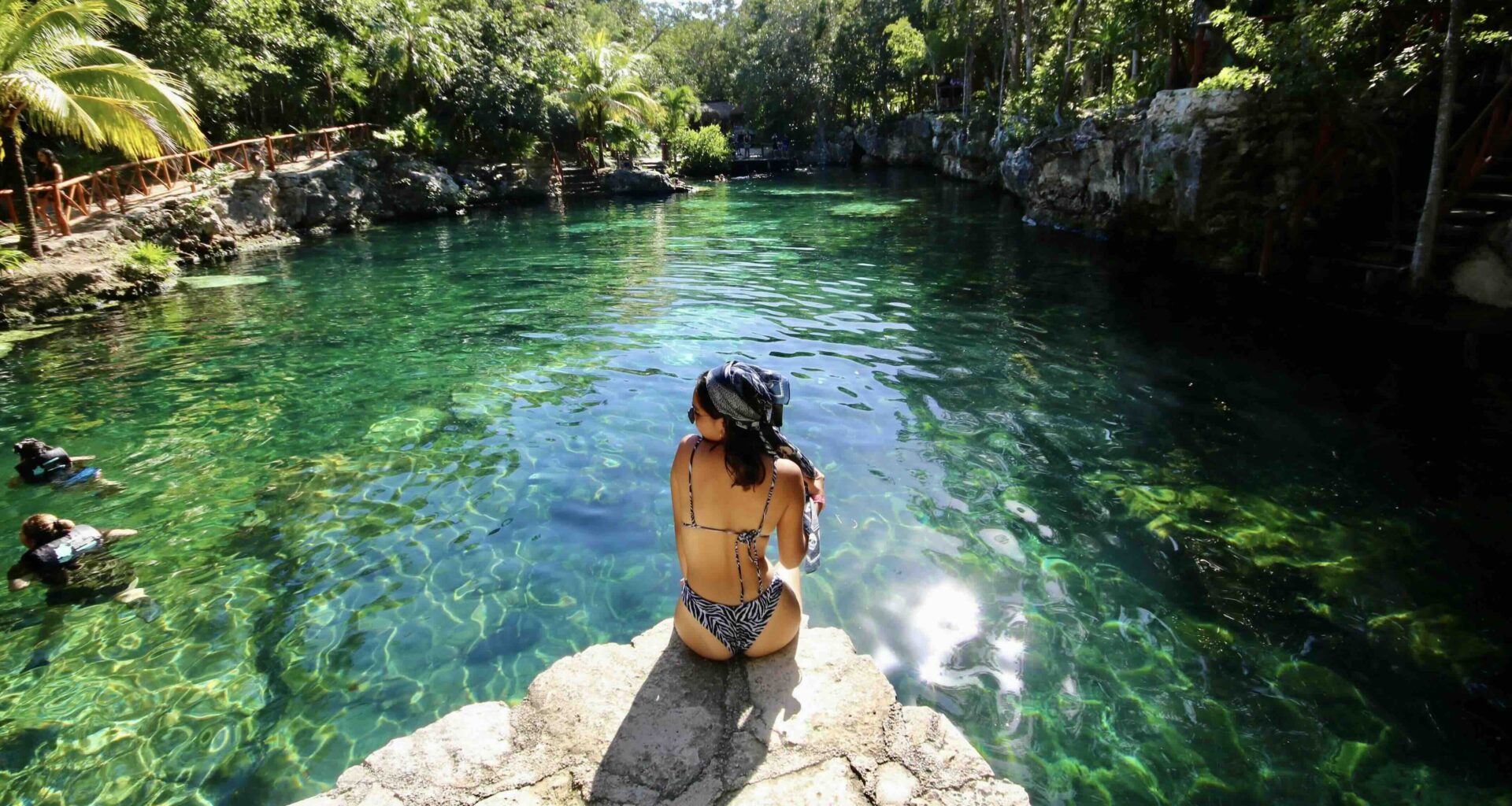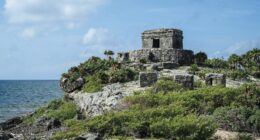Photo: Jorge Fernandez Salas / Unsplash
The Mexican Caribbean has transformed into Latin America‘s premier international tourism destination, driven by unprecedented American visitor numbers that reached new heights. Indeed, more than 3.2 million American travelers visited Cancún, Riviera Maya, and Cozumel in 2024 alone, representing an 18 percent increase from the previous year, in the process generating billions for the local economy and establishing the region as the Caribbean‘s most sought-after destination.
This remarkable achievement didn’t happen by chance. Through sophisticated marketing campaigns, expanded airline connectivity, and strategic partnerships with travel agencies across the United States, Mexican tourism authorities engineered a tourism surge that has reshaped the Caribbean tourism landscape. During peak season, occupancy rates across Riviera Maya resorts and hotels reached 87 percent, among the highest levels ever recorded for the region.
This success has manifested in every measurable metric. Cancún has officially surpassed Punta Cana in the Dominican Republic and Havana, Cuba to become the Caribbean’s number one international tourism destination, according to data from international tourism organizations. Flight load factors from major U.S. hubs, including JFK, Chicago O’Hare, Dallas-Fort Worth, and Houston Intercontinental exceeded ninety-two percent, prompting airlines to add additional weekly services.
Mexican Caribbean Travel’s Appeal
The coastline stretching south from Cancún International Airport has emerged as a powerhouse for repeat tourism. Over 62 percent of Riviera Maya visitors return within 18 months of their initial visit, drawn back by an extraordinary combination of natural wonders and luxury experiences that redefine Caribbean hospitality.
The underground rivers of Xcaret Park offer visitors the chance to float through ancient cave systems while observing tropical fish in crystal-clear waters. At Tulum, the clifftop Castillo overlooks the Caribbean Sea from its perch above the turquoise waters, providing one of Mexico‘s most photographed vistas.
And those jungle cenotes, a type of natural sinkhole filled with groundwater, offer swimmers and divers access to underwater cathedral-like chambers adorned with stalactites and stalagmites.
Luxury Mexican Caribbean Travel
Luxury resorts along this corridor have invested significantly in creating experiences that transcend traditional all-inclusive offerings. At Rosewood Mayakoba, guests can explore mangrove channels by kayak, spotting tropical birds and wildlife as they paddle through the resort’s lagoon system. The property offers guided tours where guests might encounter crocodiles, iguanas, and hundreds of bird species in their natural habitat.
The Riviera Maya EDITION at Kanai features a cenote-inspired spa and a central pool designed to echo the region’s natural swimming holes, surrounded by lush mangroves. The resort’s beach club can only be accessed by boat through waterways that wind through the jungle, creating an arrival experience that feels like discovering a hidden paradise.
Meanwhile, Banyan Tree Mayakoba delivers breakfast to private pool villas via traditional Mexican trajinera boats, floating through canals lined with mangroves at dawn. These colorful gondola-style vessels, decorated with flowers, transform room service into a cultural experience that connects guests with local traditions.
Adventure Travel in Mexico on the Rise
For adventure enthusiasts, Xplor Park provides an adrenaline rush unlike anywhere else in the Caribbean. Visitors can zip-line through stalactite-filled caverns, their headlamps illuminating ancient rock formations as they soar through underground chambers. Amphibious vehicles splash through jungle trails before plunging into underground rivers, while swimmers can explore a circuit of caves illuminated by natural skylights.
The region’s commitment to preserving Mayan heritage manifests at archaeological sites beyond Tulum. At Cobá, located 45 minutes inland, visitors can still climb the 137-foot Nohoch Mul pyramid, one of the few ancient structures in Mexico where this is permitted. From the summit, panoramic views stretch across unbroken jungle canopy to the horizon, offering a perspective unchanged for centuries.
Diving in Cozumel
Cozumel is also a popular Mexican Caribbean travel destination that’s much-loved by Americans. Mexico’s undisputed cruise capital and a diving mecca, the island welcomed more than four million cruise passengers in 2024 across its three purpose-built terminals in Puerta Maya, International Pier, and Punta Langosta, with ships from Royal Caribbean, Carnival, Norwegian, and MSC making regular stops.
Yet Cozumel’s true treasure lies beneath the waves. The Mesoamerican Reef system, the Western Hemisphere’s second-largest coral reef, surrounds the island with dive sites that have achieved legendary status among underwater enthusiasts. Palancar Gardens presents a maze of coral canyons and swim-throughs where eagle rays glide past walls covered in orange elephant ear sponges. Columbia Wall drops into the abyss, its face decorated with massive barrel sponges and black coral trees that sway in the current.
Local dive operators including Scuba Tony, Blue XT Sea Diving, and Eagle Ray Divers report that American divers comprised 70 percent of their clientele in 2024, with many guests returning annually for week-long dive packages. The island’s reputation for exceptional visibility, often exceeding 100 feet, combined with warm waters year-round and minimal current at most sites makes it accessible to divers of all skill levels.
Other Stuff To Do in Cozumel
Beyond the underwater realm, Cozumel has diversified its attractions. Punta Sur Eco Beach Park encompasses 247 acres at the island’s southern tip, featuring a crocodile observation area where visitors can safely view American crocodiles in their natural habitat at Colombia Lagoon.
The park’s lighthouse, El Caracol, offers panoramic views of the Caribbean, while the beach provides nesting grounds for sea turtles from May through October.
The San Gervasio Mayan ruins, located in the island’s interior, reveal Cozumel’s significance as a pre-Columbian pilgrimage site. Dating to 800 AD, these well-preserved structures served as a sanctuary dedicated to Ixchel, the Mayan goddess of fertility and medicine. Stone causeways connect temple complexes where Mayan women once traveled from across the Yucatan Peninsula to seek the goddess’s blessings.
Economic Transformation Beyond the Beach
This influx of American visitors has generated economic ripples that extended far beyond beachfront hotels. Tourism-related businesses in Mexico generated US $30.25 billion in 2024, a six percent increase compared to 2023. Small businesses throughout Quintana Roo reported record revenues as visitors ventured beyond resort boundaries to explore local communities.
In Puerto Morelos, the fishing village between Cancún and Playa del Carmen, family-owned restaurants experienced dramatic growth. John Gray’s Kitchen, run by the American expat chef who helped pioneer the region’s contemporary cuisine scene, saw reservations increase by 40 percent. El Pesquero, a beachfront seafood restaurant where fishermen deliver the daily catch directly to the kitchen, expanded from twelve to twenty tables to accommodate demand.
Cancún International Airport completed its Terminal 4 to handle the surge in Mexican Caribbean travel by Americans, with gates specifically designed for wide-body aircraft serving long-haul routes. The terminal features automated immigration kiosks that reduce wait times, expanded duty-free shopping, and lounges operated by major airlines to enhance the premium travel experience.
Sustainability Initiatives
Some of the best luxury places to stay in Riviera Maya have emerged as sustainability leaders. Fairmont Mayakobaoperates its own reverse osmosis water treatment plant, producing all the property’s potable water while sending treated wastewater to irrigate the adjacent El Camaleón golf course. The resort also generates 30 percent of its electricity from solar panels installed on rooftops and over parking areas, while LED lighting throughout the property has reduced energy consumption by forty percent.
Hotel Xcaret’s all-inclusive concept includes complimentary access to nature parks, encouraging guests to appreciate and protect local ecosystems rather than simply consuming resort amenities. The property uses no single-use plastics, with guests receiving reusable water bottles upon check-in that can be refilled at stations throughout the resort.
Meeting American Tourist Demand
The airlines are getting in on the act, too, with Southwest Airlines introducing nonstop services from Baltimore and St. Louis, targeting mid-sized American cities previously underserved by direct flights. JetBlue has increased its Boston-Cancún frequency from daily to twice daily during peak periods, while American Airlines adds flights from Charlotte and Philadelphia.
New resort developments promise to add some 8,000 rooms to regional inventory by 2026, too. Notable projects include a second EDITION property in Costa Mujeres, featuring overwater bungalows, a first for the Mexican Caribbean travel sector. A Ritz-Carlton Reserve in Riviera Maya will offer just 60 villas spread across 200 acres, targeting ultra-luxury travelers seeking privacy and personalized service. Four Seasons Cozumel, the luxury brand’s first property on the island, will include a marina capable of accommodating superyachts, positioning Cozumel to capture high-end maritime tourism.
Culinary tourism has evolved beyond resort restaurants. Axiote in Playa del Carmen earned recognition from the World’s 50 Best Restaurants organization for chef Xavier Perez Stone‘s innovative interpretation of Yucatecan cuisine. The restaurant’s tasting menu traces the history of regional cooking from pre-Columbian times through Spanish colonization to contemporary fusion, with each course accompanied by historical context that transforms dinner into cultural education.
Even tequila and mezcal education has become sophisticated. Certified sommeliers at properties like Grand Velas lead tastings that explore the differences between highland and valley agaves, the impact of different distillation methods, and proper pairing with Mexican cuisine. Some resorts have partnered with small-batch producers to create exclusive labels available only to guests, adding further prestige to the experience.
___________________
Bryan Dearsley is a luxury lifestyles writer, a prolific traveler, and the Founder of the Riley network of luxury lifestyle websites.




